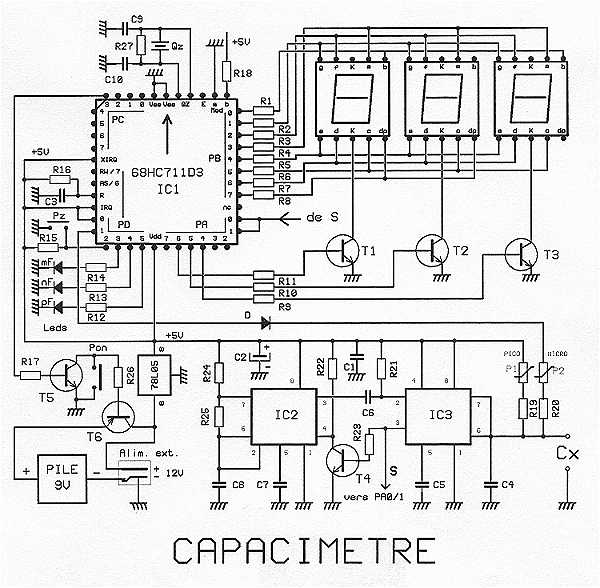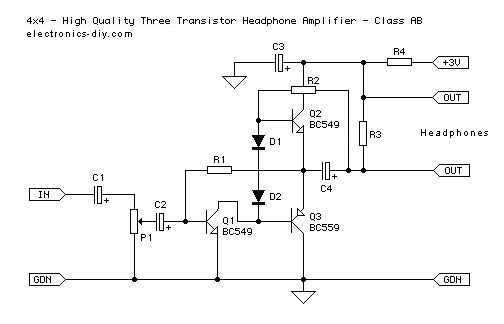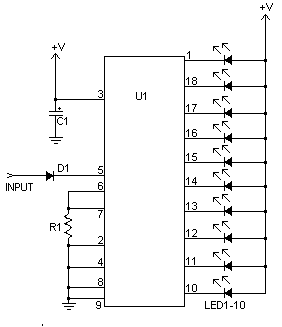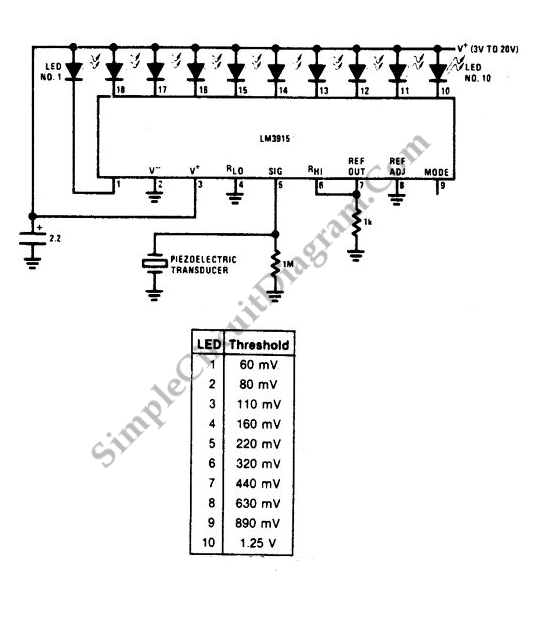
The FARA 2 meter amplifier project

This article discusses a 2-meter amplifier capable of delivering an output of 25-30 watts. Over 35 units have been acquired at a cost of less than $50 each in bulk. Photo A displays the final version of the circuit board, while Photo B shows the completed amplifier. The design incorporates one of Motorola's newer bipolar RF devices, the MRF1946A (Q1). This device demonstrates superior performance compared to many available RF FETs, as the MRF1946 can achieve 10 dB gain at 146 MHz, whereas older bipolar devices, such as the 2N6080 series, only provide approximately 5.7 dB gain. RF FETs are typically rated for 13 dB gain at 28 volts, yielding about 10 dB in the 12-14 volt range. The presented design is unconditionally stable, in contrast to FET amplifiers, which necessitate a bias supply and careful tuning at higher voltages to maintain stability. The MRF1946A is priced at about two-thirds the cost of FETs, providing significant value. Motorola released an application note (RF Device Data, Application AN955) for a 150 mW to 30-watt land mobile VHF amplifier operating in the 160 MHz range, which served as the foundation for this design. The schematic diagram can be found in Figure 1. The DC voltage supplied to the amplifier is decoupled by capacitors C2, C3, C4, C5 and inductors L1, L2. The reverse polarity protection diode D2 limits reverse voltage to 0.7 volts if the voltage is accidentally reversed, and fuse F1 will open to safeguard the amplifier. The output stripline (Z1) was extended for operation at 146 MHz, and the output capacitor (C10) was empirically adjusted to achieve approximately 70% efficiency, which aligns with expectations for a Class-C amplifier. The input circuit design is based on formulas from the RSGB VHF/UHF Manual, which is highly recommended for those interested in VHF/UHF construction. Similar impedance calculation examples can be found in various editions of The Radio Amateur's Handbook. This design approach aims to illustrate the differences between microstrip and lumped constant techniques for impedance matching, as one of the HACKERS group's objectives is to provide informal education on radio construction and design practices. A low-pass filter network (C13, C14, L5) is included in series with the output to improve harmonic rejection. Additionally, a resistive input attenuator network (R2, R3, R4, R5) is integrated into the design. The RF power transistor (Q1) is intended to be driven with an input of 2 to 3 watts; higher drive levels do not significantly increase output. Most older handheld transceivers (HTs) can drive the amplifier directly, while newer high-power HTs, rated at 4 to 7 watts, will necessitate the use of the input attenuator. When the attenuator is implemented, the 50-ohm microstrip must be isolated at the 10-ohm resistors. The circuit foil should be cut at specified locations on the parts placement diagram, Figure 2. The attenuator represents a nominal 3 dB loss, meaning that half of the power is dissipated within the network.
The 2-meter amplifier circuit is designed to provide reliable performance in VHF applications. It utilizes the MRF1946A, which is known for its high gain and efficiency, making it suitable for amateur radio and other communication purposes. The design incorporates essential components for stability and protection, such as the reverse polarity diode and fuse, ensuring that the amplifier can withstand accidental misconfigurations without damage.
The decoupling capacitors and inductors play a crucial role in maintaining signal integrity by filtering out noise from the power supply. The output stripline and capacitor adjustments are critical for optimizing performance at the desired frequency of 146 MHz, ensuring that the amplifier operates efficiently within its intended parameters.
The inclusion of a low-pass filter enhances the amplifier's ability to reject unwanted harmonics, which is vital for compliance with regulatory standards and minimizing interference with other communication signals. The resistive input attenuator allows for flexibility in interfacing with various transceiver models, accommodating both older and newer devices.
Overall, this amplifier design exemplifies a well-thought-out approach to VHF amplification, balancing cost, performance, and educational value for those engaged in amateur radio construction and experimentation. The provided schematic and component specifications serve as a valuable resource for builders looking to replicate or modify the design for their specific applications.This article describes a 2 meter amplifier capable of running 25-30 watts output. More than 35 amplifiers have been procured at a cost of less than $50 each in these quantities. Photo A shows the final version of the circuit board; the completed amplifier is shown in Photo B. It is designed around one of the newer bipolar RF devices from Motorola, an MRF1946A (Q1). This device compares favorably with many of the RF FETs available as the MRF1946 is capable of developing 10 dB gain at 146 MHz, while the older bipolar devices (the 2N6080 series) produce only about 5. 7 dB gain. RF FETs are generally rated at 13 dB gain at 28 volts-. in the 12-14 volt range they also yield about 10 dB. The design presented here is unconditionally stable, while FET amplifiers require a bias supply and careful tuning at the higher voltages to maintain stability.
The cost of the MRF1946A is only about two-thirds that of the FETS, yielding the most "Bang for the Buck!" Motorola produced an application note (RF Device Data, Application AN955) for a 150 mW to 30 watt land mobile VHF amplifier in the 160 MHz range, based on the MRF1946. This was the starting point for the design. The schematic diagram is shown in Figure 1. DC voltage into the amplifier is decoupled by C2, C3, L1 C4, C5, and L2. D2 is the reverse polarity protection diode-if the voltage is inadvertently reversed, D2 will limit the reverse voltage to 0.
7 volts and fuse F1 will open, protecting the amplifier. The output stripline (Z1) described in the application note was lengthened for operation at 146 MHz and the output capacitor (C10) was empirically adjusted to yield an efficiency in the 70% range, just about what one would expect of a Class-C amplifier. The input circuit was derived from the formulas given in the RSGB VHF/UHF Manual. This manual is highly recommended for those interested in VHF/UHF construction. Similar examples of impedance calculations can be found in several editions of The Radio Amateur`s Handbook.
This approach was intended to demonstrate the microstrip vs. lumped constant techniques for impedance matching as one of the more subtle objectives of the HACKERS group is to provide some informal education on radio construction and design practices. A low pass filter network (C13, C14, L5) is in series with the output to enhance harmonic rejection. Incorporated into the design is a resistive input attenuator network (R2, R3, R4, R5). The RF power transistor (Q1) is intended to be driven with 2 to 3 watts input; higher drive levels will not increase the output substantially.
Most of the older HTs can drive the amplifier directly, but the new breed of high power, 4 to 7 watt HTs will require the input attenuator. When the attenuator is used, the 50 ohm microstrip must be isolated at the 10 ohm resistors. Cut the circuit foil at the locations noted on the parts placement diagram, Figure 2. The attenuator represents a nominal 3 dB loss; that is, half of the power is dissipated in the network.
In addition to limit 🔗 External reference
The 2-meter amplifier circuit is designed to provide reliable performance in VHF applications. It utilizes the MRF1946A, which is known for its high gain and efficiency, making it suitable for amateur radio and other communication purposes. The design incorporates essential components for stability and protection, such as the reverse polarity diode and fuse, ensuring that the amplifier can withstand accidental misconfigurations without damage.
The decoupling capacitors and inductors play a crucial role in maintaining signal integrity by filtering out noise from the power supply. The output stripline and capacitor adjustments are critical for optimizing performance at the desired frequency of 146 MHz, ensuring that the amplifier operates efficiently within its intended parameters.
The inclusion of a low-pass filter enhances the amplifier's ability to reject unwanted harmonics, which is vital for compliance with regulatory standards and minimizing interference with other communication signals. The resistive input attenuator allows for flexibility in interfacing with various transceiver models, accommodating both older and newer devices.
Overall, this amplifier design exemplifies a well-thought-out approach to VHF amplification, balancing cost, performance, and educational value for those engaged in amateur radio construction and experimentation. The provided schematic and component specifications serve as a valuable resource for builders looking to replicate or modify the design for their specific applications.This article describes a 2 meter amplifier capable of running 25-30 watts output. More than 35 amplifiers have been procured at a cost of less than $50 each in these quantities. Photo A shows the final version of the circuit board; the completed amplifier is shown in Photo B. It is designed around one of the newer bipolar RF devices from Motorola, an MRF1946A (Q1). This device compares favorably with many of the RF FETs available as the MRF1946 is capable of developing 10 dB gain at 146 MHz, while the older bipolar devices (the 2N6080 series) produce only about 5. 7 dB gain. RF FETs are generally rated at 13 dB gain at 28 volts-. in the 12-14 volt range they also yield about 10 dB. The design presented here is unconditionally stable, while FET amplifiers require a bias supply and careful tuning at the higher voltages to maintain stability.
The cost of the MRF1946A is only about two-thirds that of the FETS, yielding the most "Bang for the Buck!" Motorola produced an application note (RF Device Data, Application AN955) for a 150 mW to 30 watt land mobile VHF amplifier in the 160 MHz range, based on the MRF1946. This was the starting point for the design. The schematic diagram is shown in Figure 1. DC voltage into the amplifier is decoupled by C2, C3, L1 C4, C5, and L2. D2 is the reverse polarity protection diode-if the voltage is inadvertently reversed, D2 will limit the reverse voltage to 0.
7 volts and fuse F1 will open, protecting the amplifier. The output stripline (Z1) described in the application note was lengthened for operation at 146 MHz and the output capacitor (C10) was empirically adjusted to yield an efficiency in the 70% range, just about what one would expect of a Class-C amplifier. The input circuit was derived from the formulas given in the RSGB VHF/UHF Manual. This manual is highly recommended for those interested in VHF/UHF construction. Similar examples of impedance calculations can be found in several editions of The Radio Amateur`s Handbook.
This approach was intended to demonstrate the microstrip vs. lumped constant techniques for impedance matching as one of the more subtle objectives of the HACKERS group is to provide some informal education on radio construction and design practices. A low pass filter network (C13, C14, L5) is in series with the output to enhance harmonic rejection. Incorporated into the design is a resistive input attenuator network (R2, R3, R4, R5). The RF power transistor (Q1) is intended to be driven with 2 to 3 watts input; higher drive levels will not increase the output substantially.
Most of the older HTs can drive the amplifier directly, but the new breed of high power, 4 to 7 watt HTs will require the input attenuator. When the attenuator is used, the 50 ohm microstrip must be isolated at the 10 ohm resistors. Cut the circuit foil at the locations noted on the parts placement diagram, Figure 2. The attenuator represents a nominal 3 dB loss; that is, half of the power is dissipated in the network.
In addition to limit 🔗 External reference





